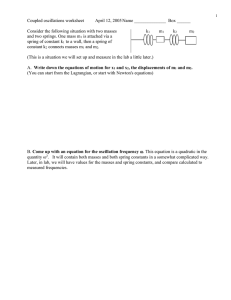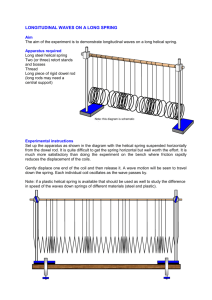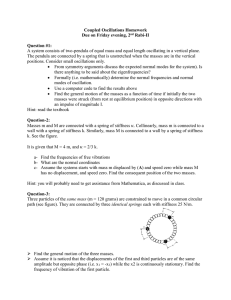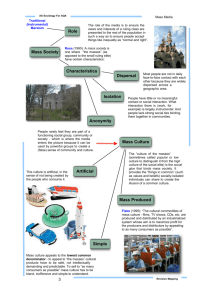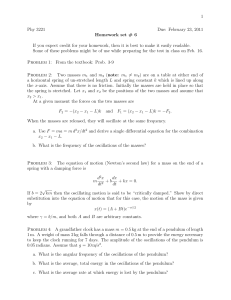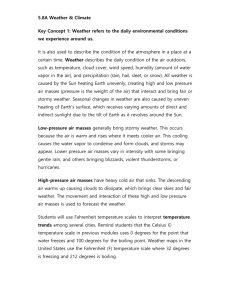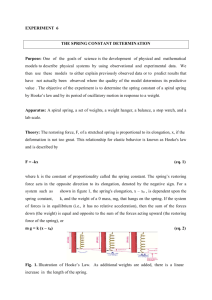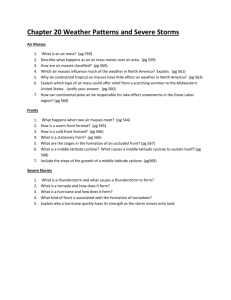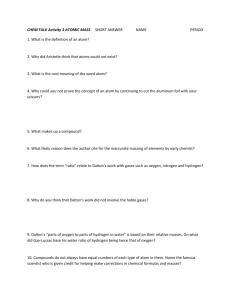Helical Spring Experiment: Measuring Gravity (g)
advertisement
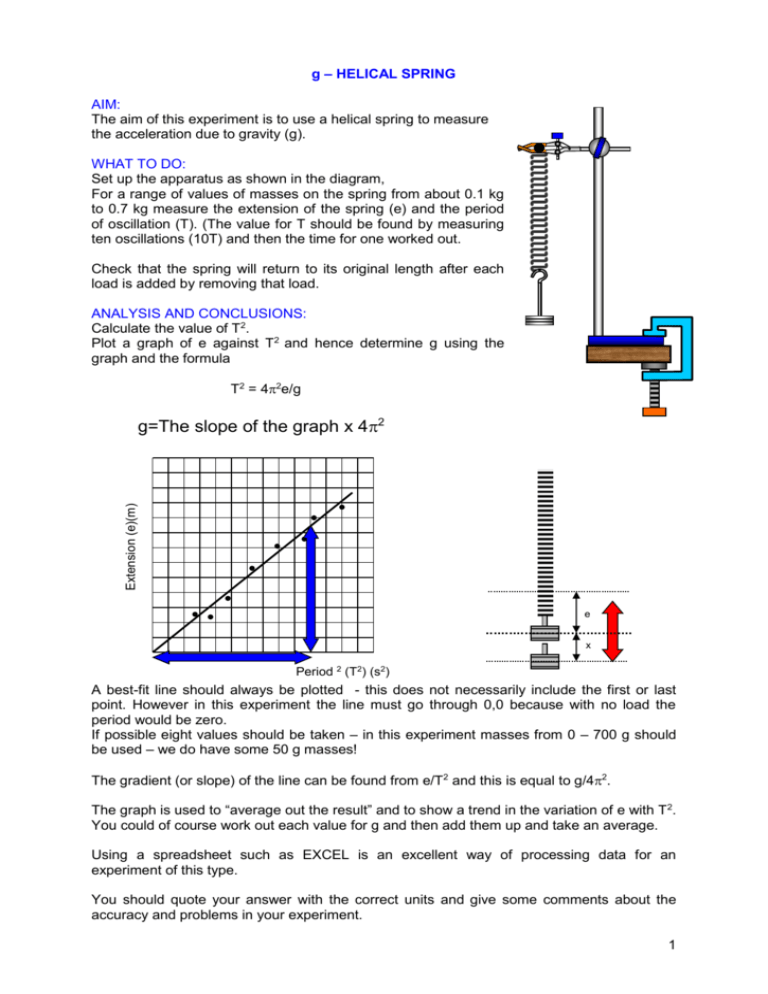
g – HELICAL SPRING AIM: The aim of this experiment is to use a helical spring to measure the acceleration due to gravity (g). WHAT TO DO: Set up the apparatus as shown in the diagram, For a range of values of masses on the spring from about 0.1 kg to 0.7 kg measure the extension of the spring (e) and the period of oscillation (T). (The value for T should be found by measuring ten oscillations (10T) and then the time for one worked out. Check that the spring will return to its original length after each load is added by removing that load. ANALYSIS AND CONCLUSIONS: Calculate the value of T2. Plot a graph of e against T2 and hence determine g using the graph and the formula T2 = 42e/g Extension (e)(m) g=The slope of the graph x 42 e x Period 2 (T2) (s2) A best-fit line should always be plotted - this does not necessarily include the first or last point. However in this experiment the line must go through 0,0 because with no load the period would be zero. If possible eight values should be taken – in this experiment masses from 0 – 700 g should be used – we do have some 50 g masses! The gradient (or slope) of the line can be found from e/T2 and this is equal to g/42. The graph is used to “average out the result” and to show a trend in the variation of e with T 2. You could of course work out each value for g and then add them up and take an average. Using a spreadsheet such as EXCEL is an excellent way of processing data for an experiment of this type. You should quote your answer with the correct units and give some comments about the accuracy and problems in your experiment. 1 This sheet is for the teacher and technician only Apparatus required: Helical spring Retort stand, clamp and boss Set of slotted masses (0-1 kg) Nail (blunted) Metre ruler Stopwatch G clamp Comments on the experiments: No real problems or difficulties. The results should give good values for g. Stress the need for both complete oscillations and preventing excessive stretching of the spring. 2
